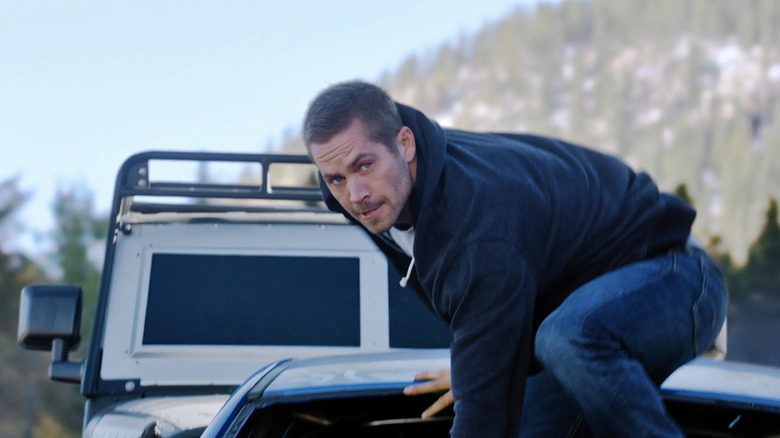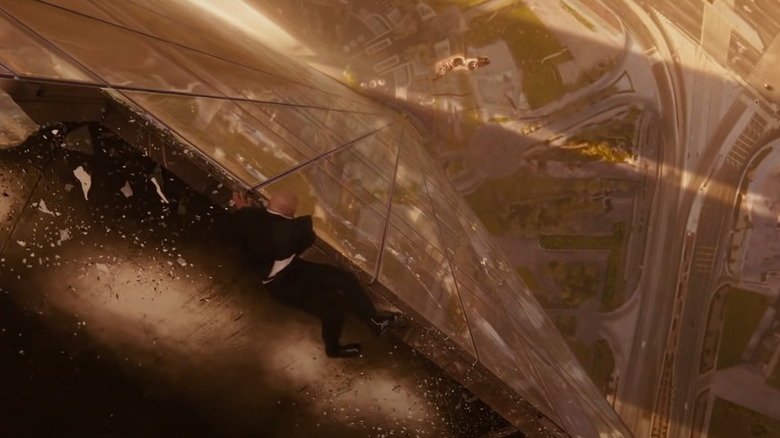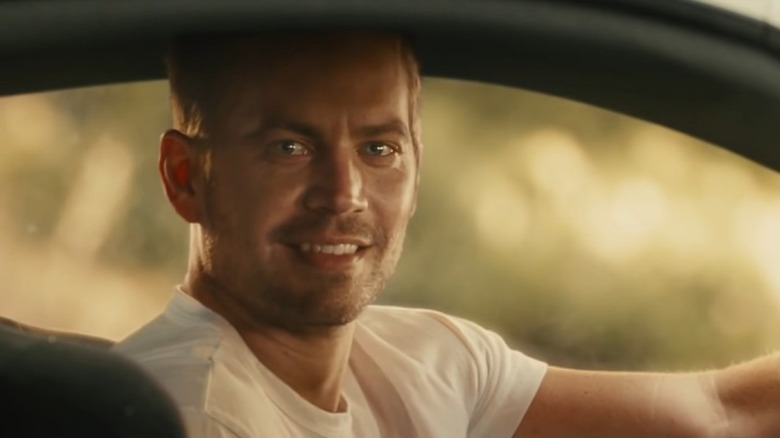Fast And Furious 7 Challenged Director James Wan Like Never Before
Where did the "Fast & Furious" franchise hit its creative peak? It's a debate that will rage on forever. Some fans point to the early entries, when the series seemed to at least be sort of trying to stay within the grounds of realism. Others point to the latest movies, which have made it unambiguously clear that these are live-action cartoons where violence doesn't have real consequences for any of our main characters. Certain viewers and critics have always bafflingly tried to maintain that this franchise isn't in on the joke, that the writers include all these ridiculous moments while somehow being unaware of how unrealistic they are, but the latter movies have shut that form of critique down once and for all.
But for most, the series' peak was in the sixth or seventh movies. That was the point where the movies were getting aggressively silly without so many aggressive winks to the audience. We'd get the insanity of Dom driving a car through multiple skyscrapers, but the emotional stakes were still clear. In other words, here the movies were having fun, but not too much fun.
The seventh movie in particular is notable for being the only one directed by James Wan, the guy behind horror movies like "Insidious" and "Malignant," both of which are also not designed to be taken 100% seriously. Wan is the king of movies that go off-the-wall insane while still maintaining a strong emotional throughline, and "Furious 7" — with its heart-wrenching thread of Paul Walker's Brian leaving the series forever — was the perfect fit for him, although it didn't always feel like that from his perspective. In a recent interview with The Hollywood Reporter, he referred to directing it as "the hardest movie of my career."
The scariest movie in the series
"I've done technically challenging movies since then, but 'Furious 7' just hit on so many different levels," Wan explained. The sets were bigger, the action more complicated, and the whole thing far more expensive. "I really wanted to create a movie that had the look and smell of their franchise, but I wanted to design set pieces that were a bit more tense, suspenseful and scary." He said "the first thing" he pitched was the scene where Brian (Paul Walker) has to escape the bus that's about to fall off a cliff.
It's a scene that includes a lot of insane moments, sure, but also includes a ton of smart, subtle decisions to raise the stakes. When Brian opens the truck's door that faces towards the cliff, for instance, Wan chooses to have another soldier's body fall out first. Watching that soldier drop and hit the ground makes it clear that this is a lethal drop, not like that cliff jump from "Fast Five," and that Brian will indeed die if he doesn't get off the truck somehow.
It's a scene that takes full advantage of the audience's fear of heights, something Wan does once again with the skyscraper scene later on. The most haunting image of that scene is not the slow-motion shot of the car flying through the air between buildings, but that shot where Dom jumps out of the car and manages to stop right at the ledge. If Dom had been sliding on the floor with just a little bit more momentum he would've fallen hundreds of feet, and thanks to the lingering shot above his head, we can feel exactly how far that distance really is.
Dealing with an unexpected tragedy
Speaking of Brian, the other major challenge was how Paul Walker tragically passed away before the movie was complete. "We were like, 'Do we just shut the movie down for good?' But we collectively felt like this movie needed to be Paul's legacy." He had to use the footage of Paul he already had (about "half of what I needed," he said), as well as the help of Walker's brothers, Cody and Caleb, to step in for the character as lookalikes. "We then pulled different words that Paul had spoken all through the franchise to create sentences for us," Wan said. Throw in about 350 uses of CGI shots, and you got a version of Walker that looked pretty convincing for 2015.
It was a risky gambit, one that in the wrong hands could've easily come across as a soulless exploitation of a deceased actor's image. But in Wan's final product, it came across as a moving tribute to both the late actor and his character in the series. Brian might technically be alive in later movies (arguably to the franchise' detriment), but "Furious 7" handled his unofficial death with a grace and poignancy we're not used to from the franchise. It might have been one of the most difficult films Wan had worked on so far, but at least he managed to make it look easy.


